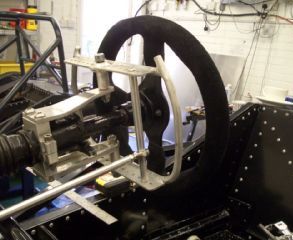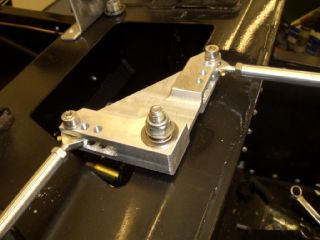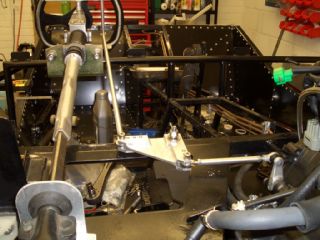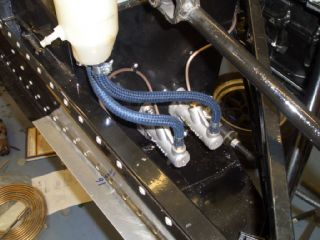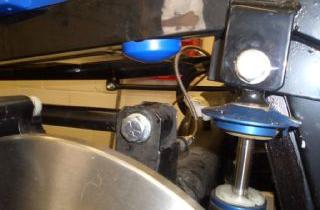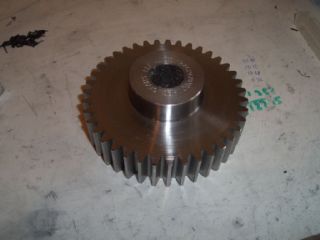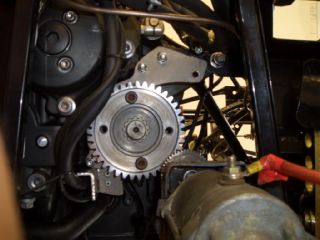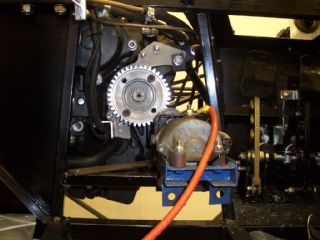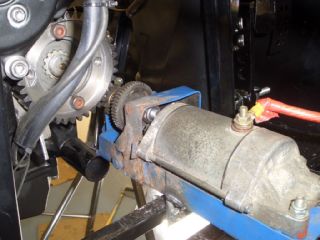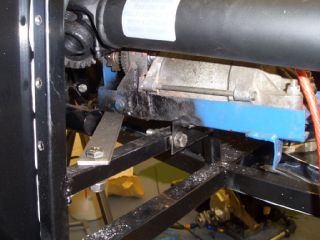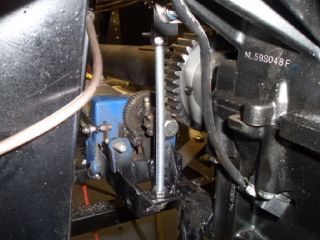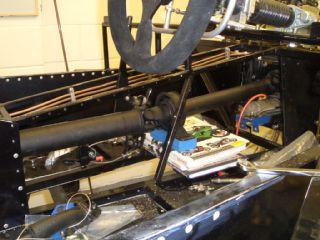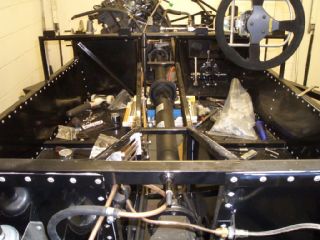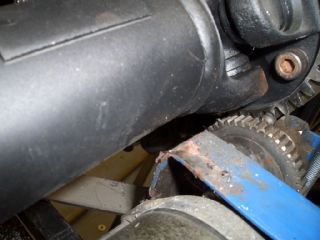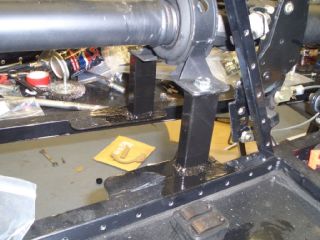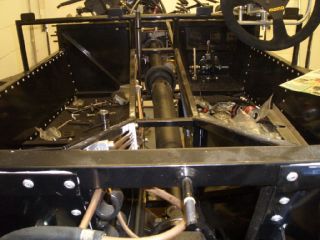But before I go into detail on the work done, an update on the damper
situation, which at the end of last month's episode wasn't
looking too good. I sent an e-mail to Guy Evans, head honcho
at Nitron, asking if they'd be able to fix the bust damper. He wrote back saying that they didn't support these
dampers any more, and there was nothing they could do. He suggested I weld it back together again, saying that
the damper would have a 50% chance of working if I did...
Now, I don't think I'm a particularly stroppy person but the dampers are only 5 years old, cost about 800 quid
when I bought them, and were sold as being factory servicable. I don't think that 5 years is outside the normal
working lifespan of a set of dampers, and as such I was a bit miffed that Nitron's aftersales support seemed to
amount to shrugged shoulders. So I sent a rather terse e-mail back to Guy Evans suggesting, in entirely non-insulting
language, that I didn't think this was particularly stellar customer service and suggesting that I might be buying
a couple of sets of ProTech shocks in the near future rather than the Nitron NTRs I'd been planning to get for
the FurybirdII.
Guy Evans, in his reply, said that he found my e-mail 'annoying' and 'offensive', which I found surprising since
it was merely commenting (justifiably I'd say) on his firm's customer service. He said that the NTXs (the dampers
I had) were a product they'd stopped supporting 2 years ago (only a year after they stopped selling them) and that
they were a product they were 'glad to have left behind'. Apparently they decided stop servicing them because the
tools required to service them were 'taking up space in the workshop'. Yup, you couldn't make it up.
So after explaining how crap the product he used to sell was, clarifying that customer service depends on whether
they've got enough spare workshop space and complaining about my insolence in criticising his firm, Mr. Evans said
he 'always' offered a discount on a new set of dampers in a situation like this (news to me, he hadn't mentioned
it in his earlier e-mail).
I replied in a carefully worded e-mail so as to not bruise Mr. Evans' tender feelings or upset him again, asking
what sort of discount was on the table, and he replied saying 30%. Now I was going to get a pair of NTRs for the
Furybird anyway, so I wrote back saying that was fine and asking for a total figure including P&P, VAT and
the cost of the little mounting top-hat pieces. And never heard anything more.
So, congratulations to Nitron for continuing the great tradition of British industry. Great product, reasonable
prices, and a quite appalling level of customer service. We'll put Nitron's dampers in the same pile as Hi-Spec Motorsport's
brakes and Barmby Engineering's wheels.
The one ray of sunshine was that Guy Evans let slip that the ProTechs were designed by him, and are internally
the same as the NTX dampers I already had. Now I've always been very happy with the performance of the NTXs, and
Guy even admitted that they'd probably be fine on a car as light as a BEC racer. So, 2 sets of ProTechs it is.
And I have to say that so far ProTech have been absolutely fantastic on the old customer service front - let's
see if that continues...
Anyway, rant over - onto the engineering... |
